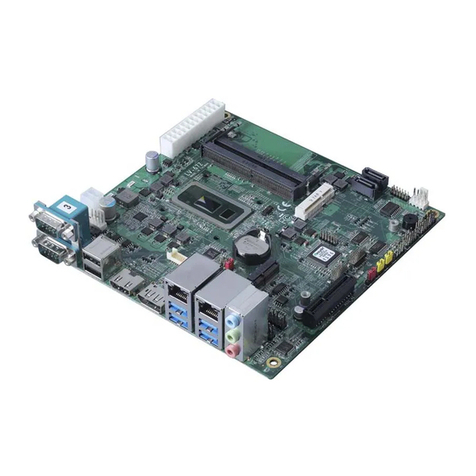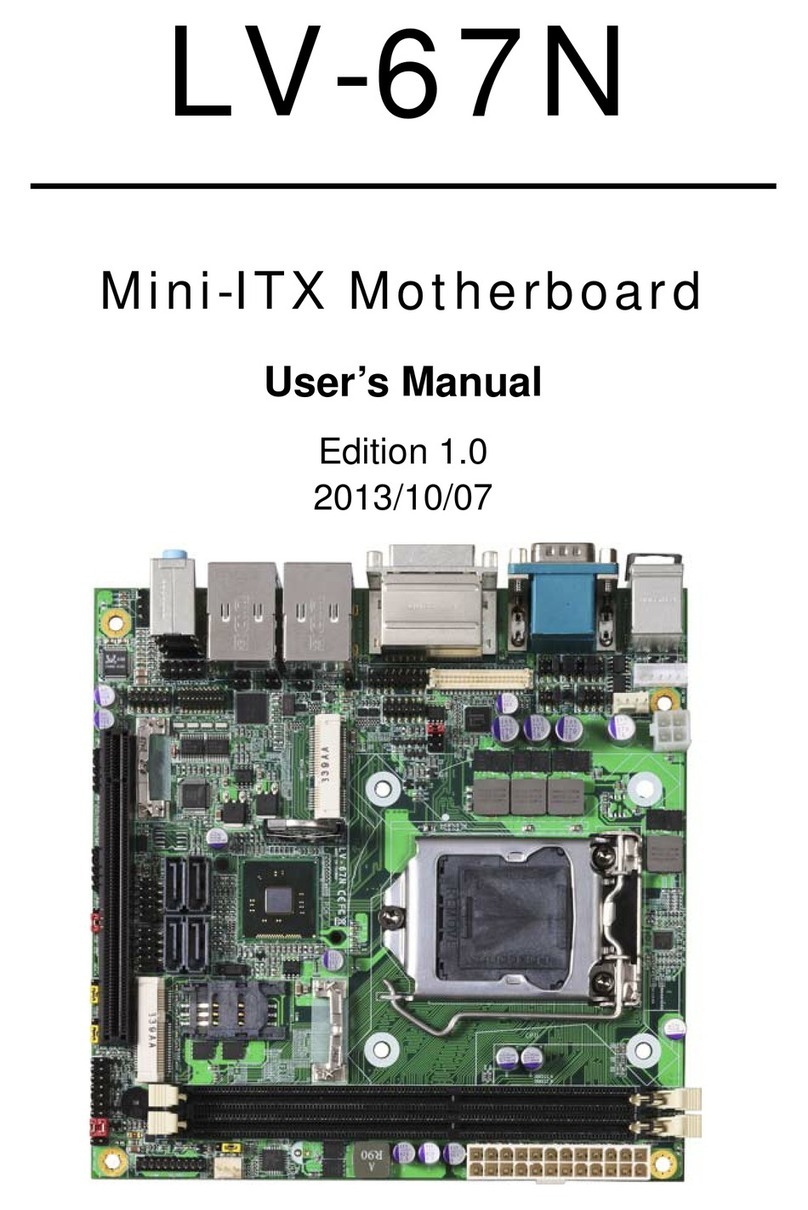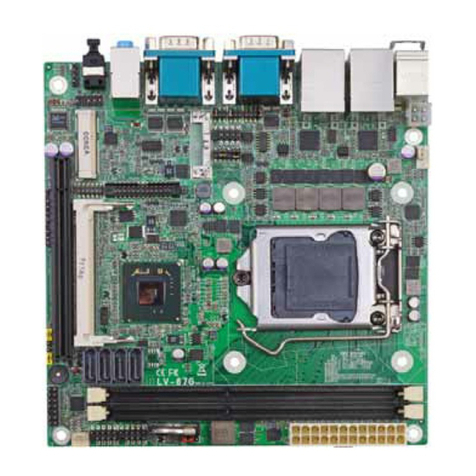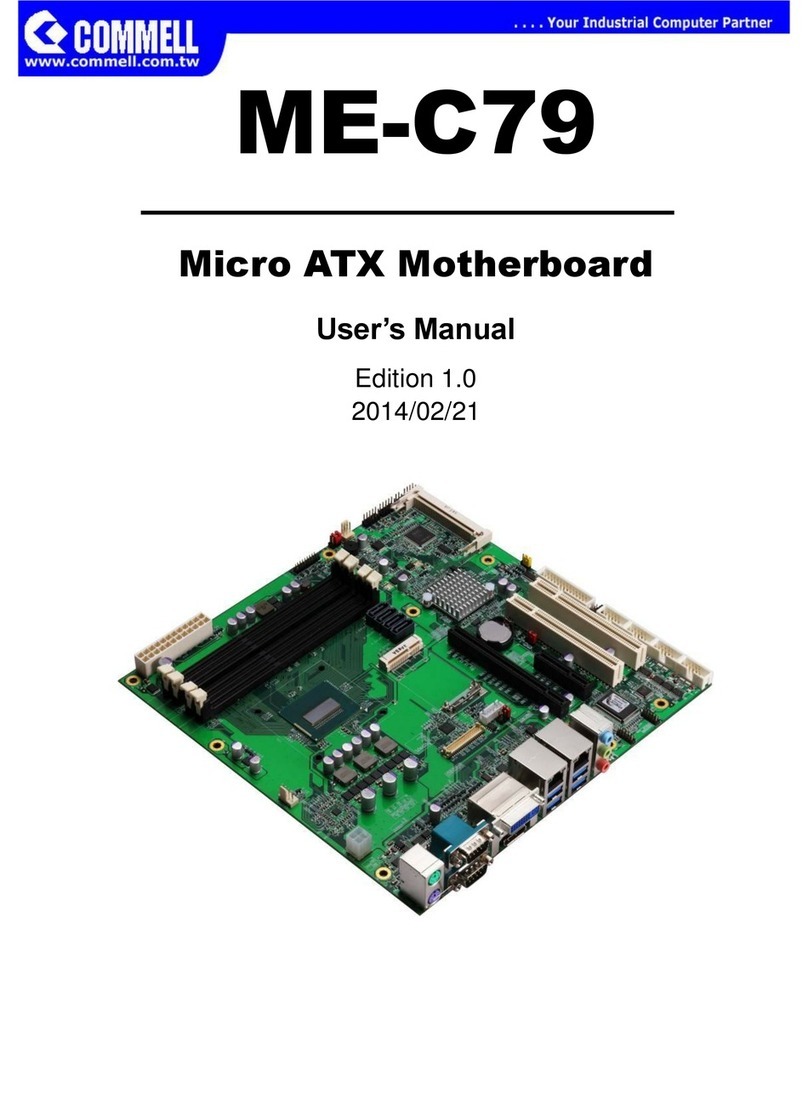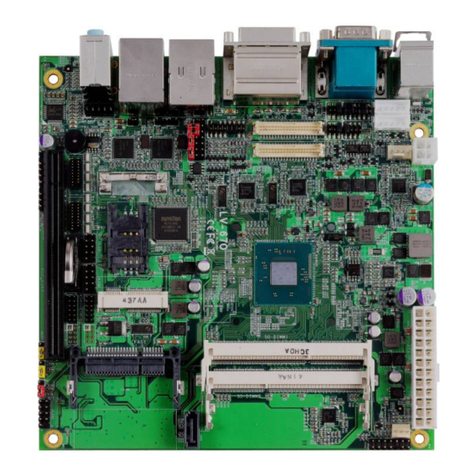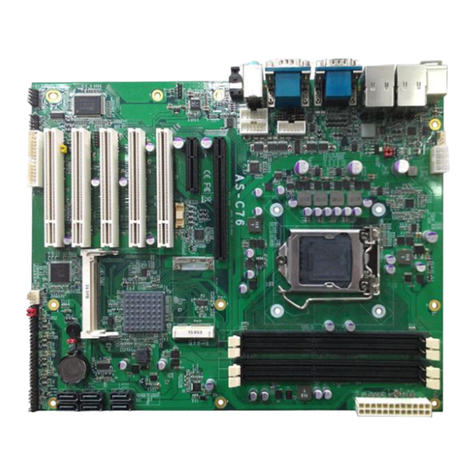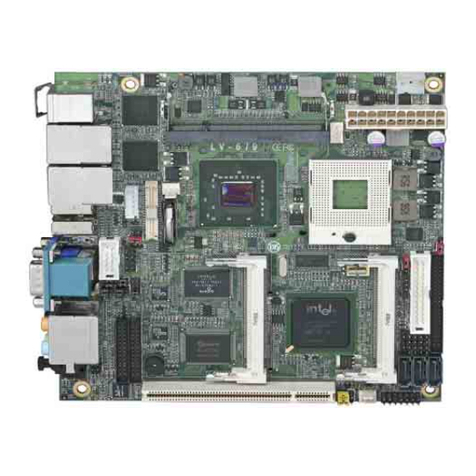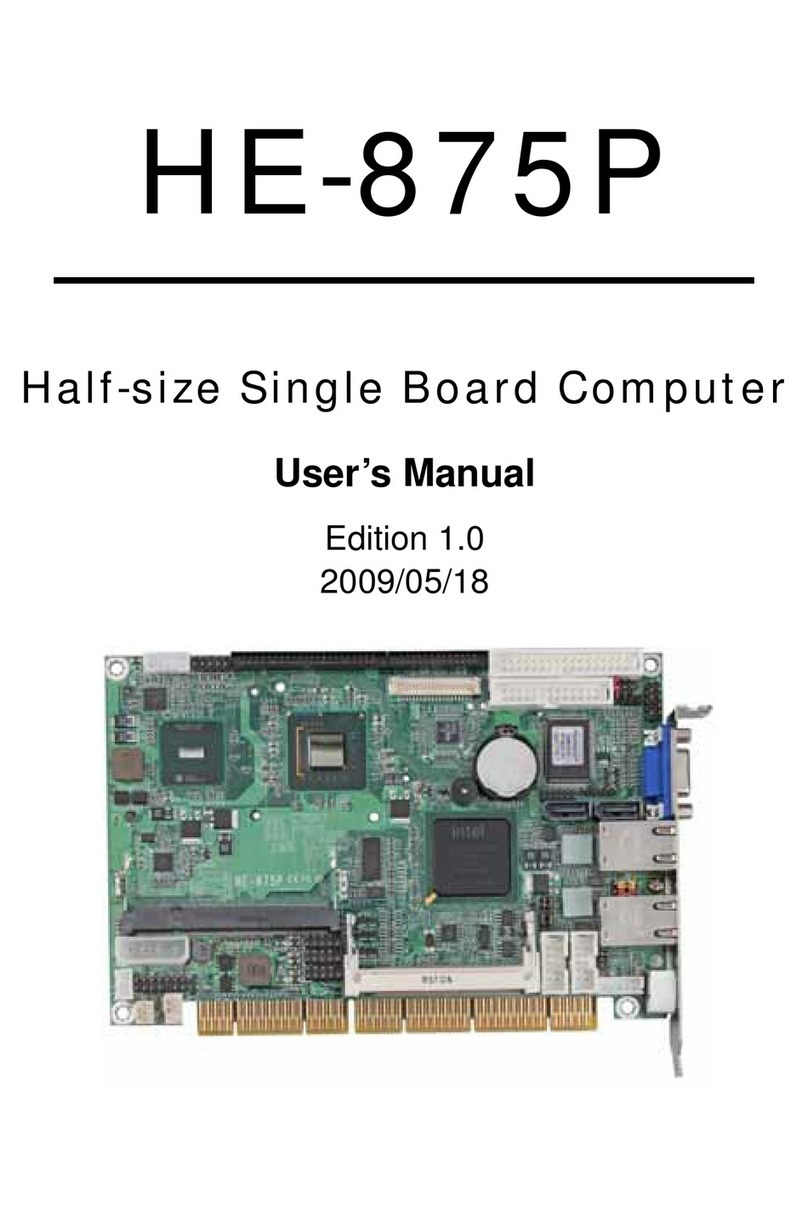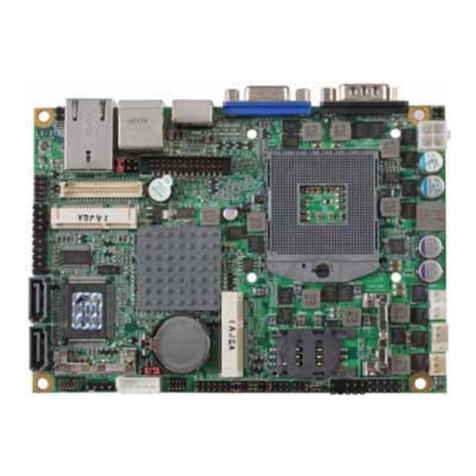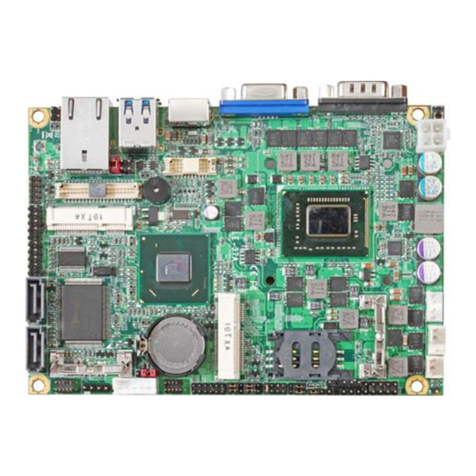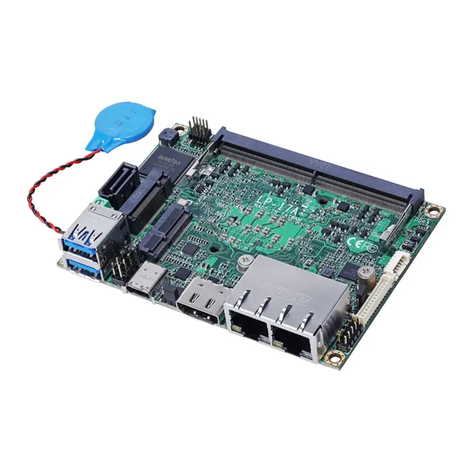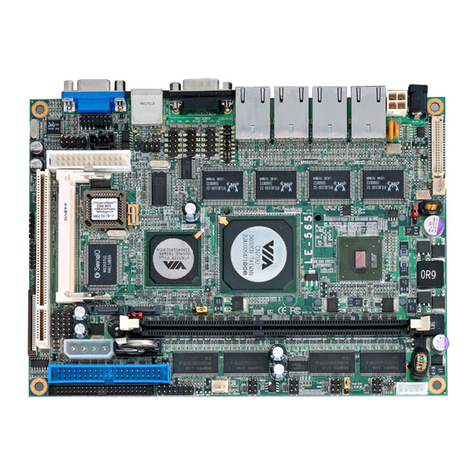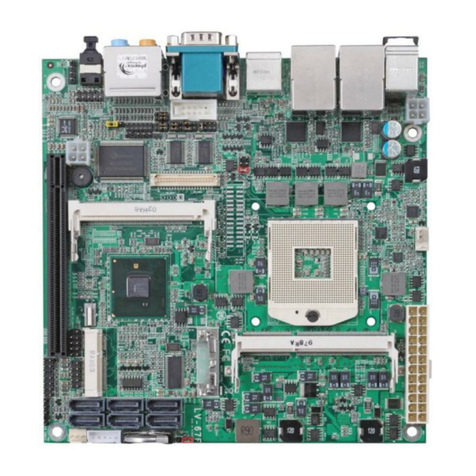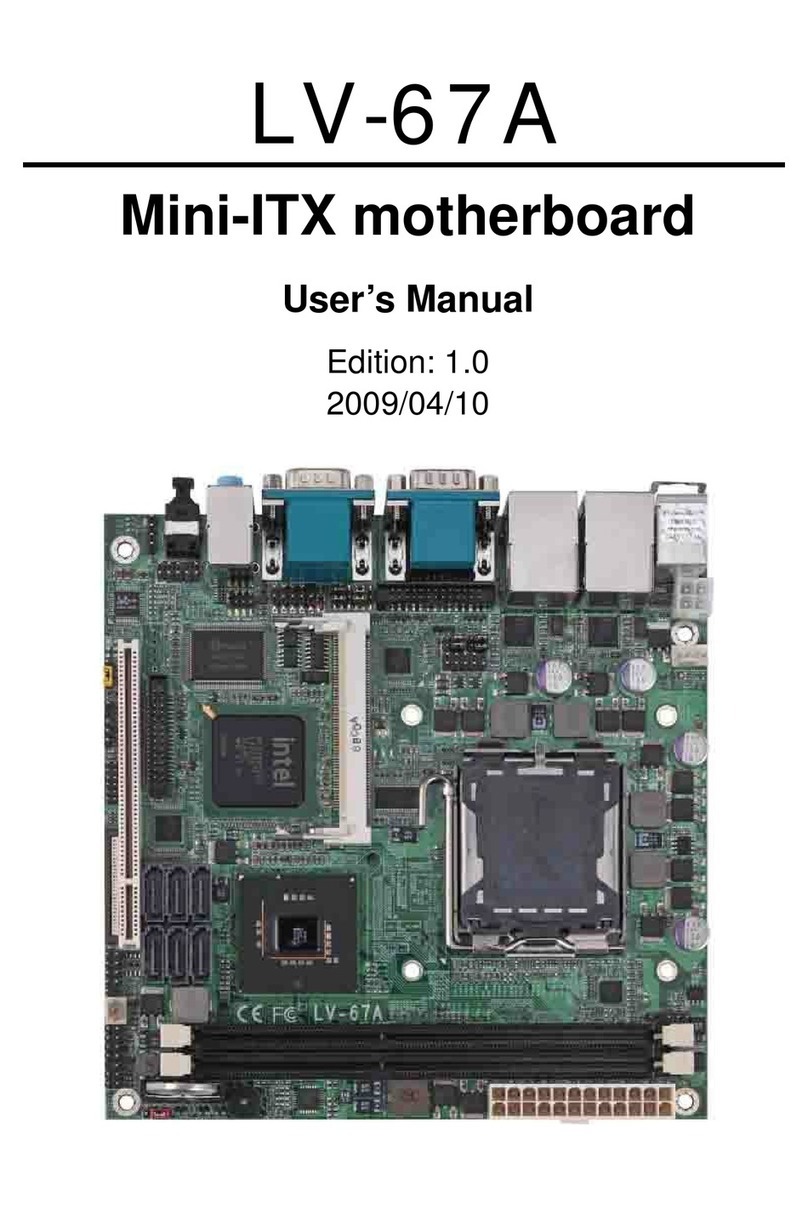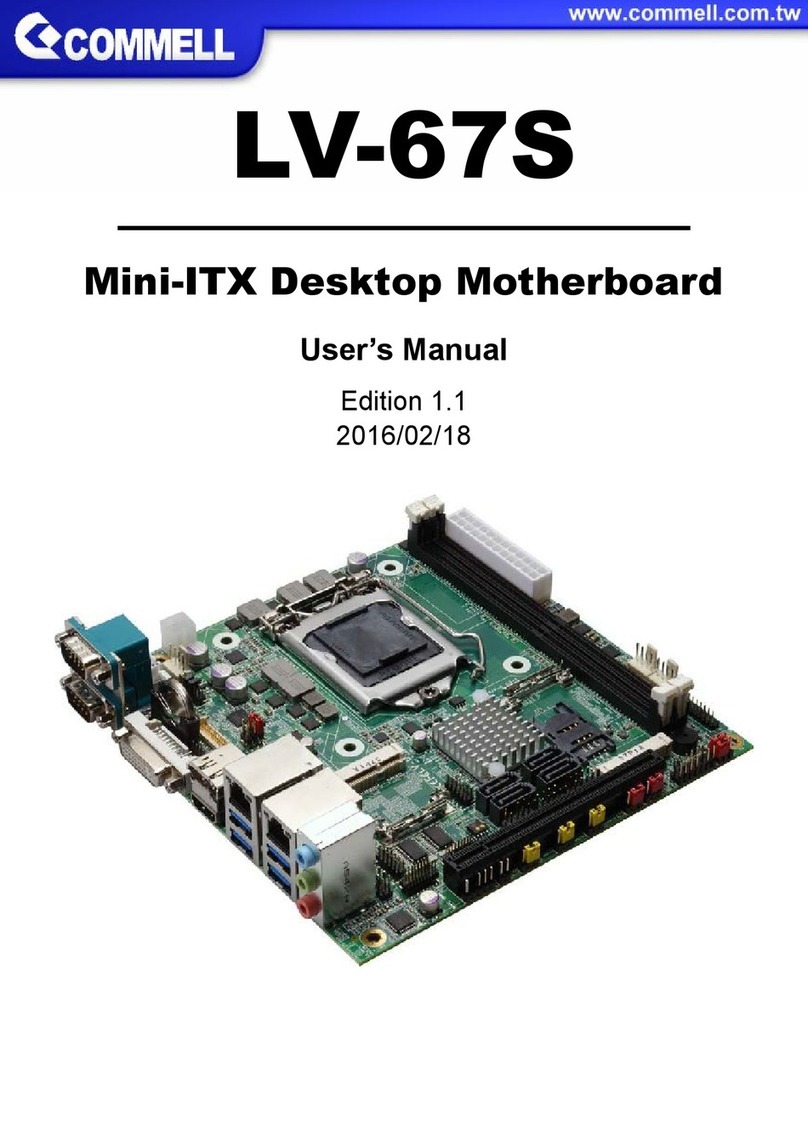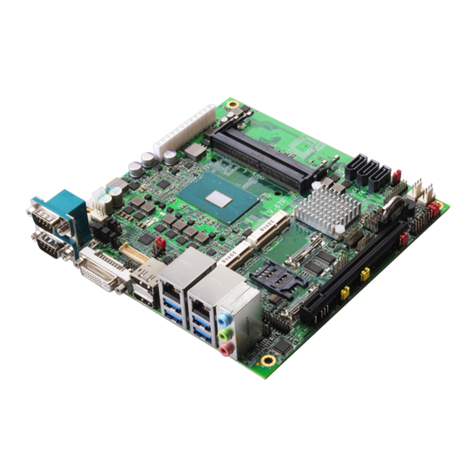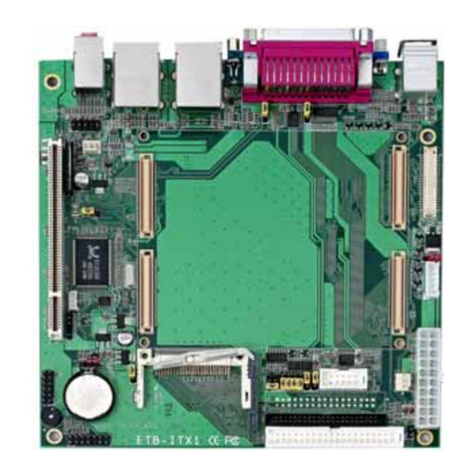Index
Chapter 1 <Introduction>............................................................... 4
1.1 <Product Overview>............................................................4
1.2 <Product Specification> ......................................................5
1.3 <Mechanical Drawing>........................................................6
1.4 <Block Diagram>.................................................................7
Chapter 2 <Hardware setup>......................................................... 8
2.1 <Connector Location and Reference> ................................8
2.1.1 <Internal connectors list> ..........................................9
2.1.2 <External connectors list>.........................................9
2.2 <Jumper Location and Reference> ...................................10
2.2.1 <Jumper list> .......................................................... 10
2.2.2 <Clear CMOS and Power on type selection>.......... 11
2.3 <Installing the Memory>.................................................... 11
2.4 <I/O interface> ..................................................................12
2.4.1 <Serial ATA interface>.............................................12
2.4.2 <Ethernet interface>................................................12
2.4.3 <Display interface> .................................................13
2.4.4 <Serial Port interface> ............................................15
2.4.5 <USB interface>......................................................17
2.4.6 <Audio interface>....................................................18
2.4.7 <Expansion slot>.....................................................19
2.4.8 <Front panel switch and indicator> .........................19
2.4.9 <Other interface> ....................................................20
2.5 <Power supply> ................................................................22
2.5.1 <Power input>......................................................... 22
Appendix A <Flash BIOS> ........................................................... 23
A.1 BIOS Auto Flash Tool........................................................23
A.2 Flash Method....................................................................23
Appendix B <LCD Panel Type select> ........................................25
Appendix C <Programmable Watch Dog Timer> ....................... 26
Appendix D <Programmable GPIO > .......................................... 27
Appendix E <Setup ADP-3355>...................................................28
Contact information .....................................................................28
